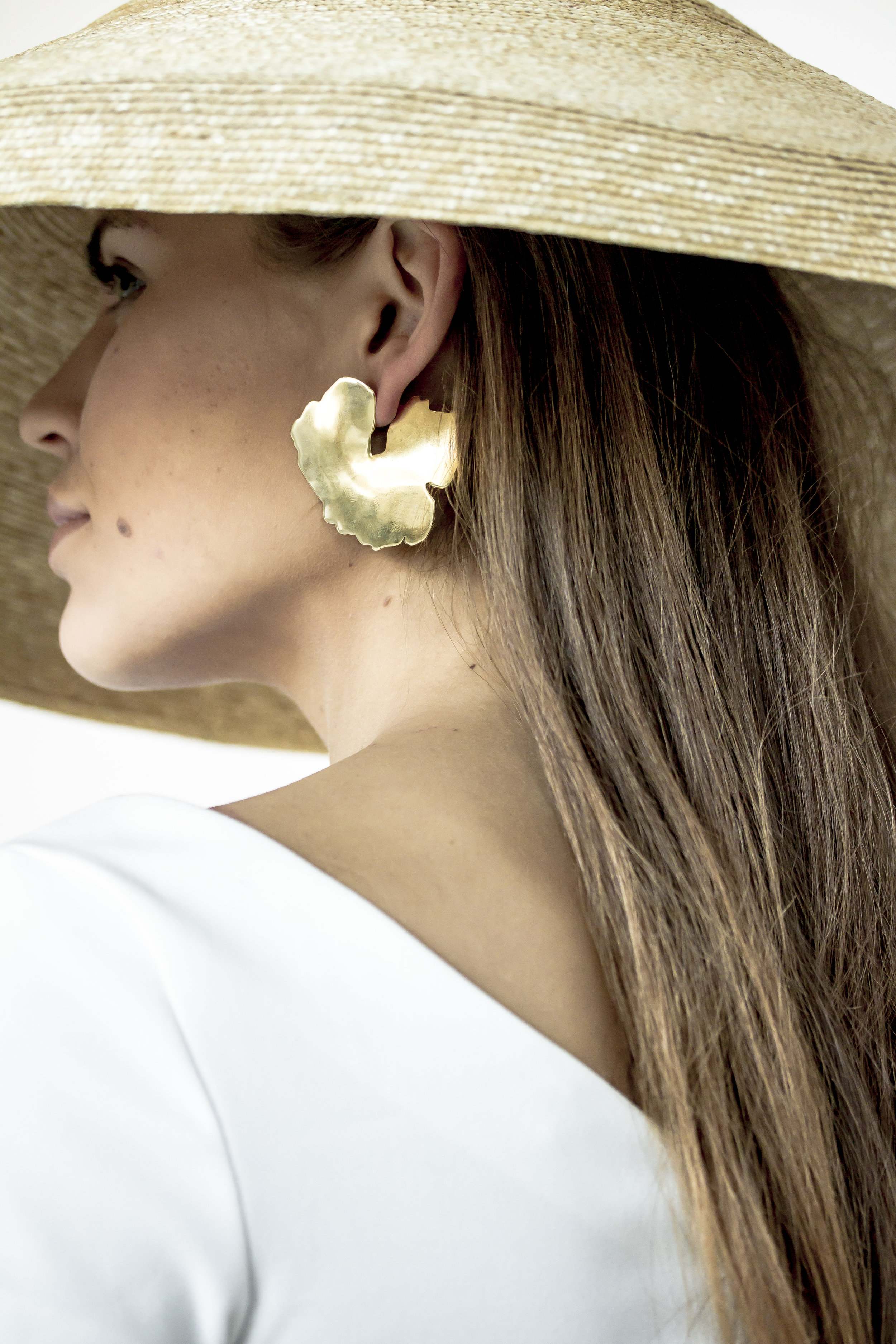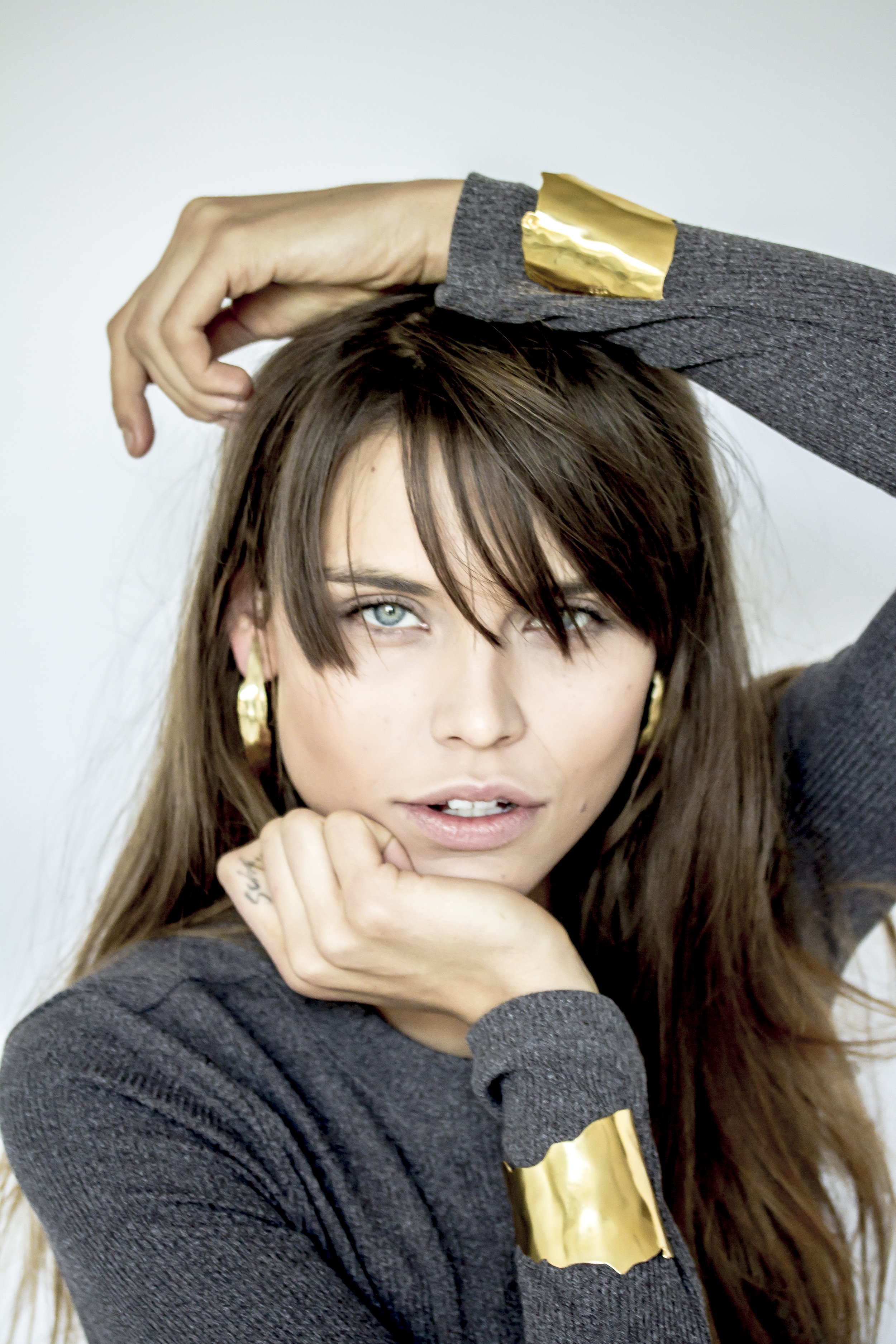The Baltic Sea is in a critical state: it's currently facing a number of environmental risks, including eutrophication, climate change, and hazardous chemicals, to name a few. Guardian of the Baltic Sea from Finland works together with the Baltic Sea Action Group with the aim to leave a living and vibrant Baltic Sea for future generations to come. For every sold item, a portion is donated to the Baltic Sea activists. When you acquire your own numbered piece from the collection, you support a good cause. But first of all, it leaves you looking exquisite in eco-conscious archipelago-themed jewellery.
Words: Meri
Image: Guardian of the Baltic Sea 'Krokskär' Earrings
How did the idea for the Guardian of the Baltic Sea concept first come about?
My sister Heini was diving in the Baltic Sea in 2009 and saw first-hand how polluted the sea was.
She decided to do something to help and designed our classic pendant. We had an ambitious goal from the start: to raise 100 000€ to Baltic Sea Action Group. We reached that commitment early on, and continued with the newest 'Map Collection'. So far we have raised over 120 000€ for the Baltic Sea.
Who are the designers of the beautiful jewellery? Can you tell us about your design concept?
I have designed the 'Map collection', which features earrings shaped as different Baltic Sea islands, and a statement bracelet that follows the outlines of Pohjanlahti (Gulf of Bothnia). My sister Heini has designed the 'Classic collection'. Our design inspiration comes from the natural shapes smoothed out by the sea: barren cliffs and sandy beaches of the Baltic archipelago. Sustainability is the key of our design process. Our jewellery is handmade in Finland by local small entrepreneurs.
Image: Guardian of the Baltic Sea 'Öland' Earrings & 'Pohjanlahti' Bracelet
What are the materials you are using?
We use recycled silver and gold. All our packaging is plastic-free and we use only certified recycled paper and cardboard in our packaging. In the future, our jewellery will be packaged in Sulapac boxes. Sulapac is a fully biodegradable packaging material made from renewable and sustainable raw materials.
"Our design inspiration comes from the natural shapes smoothed out by the sea: barren cliffs and sandy beaches of the Baltic archipelago."
Image: Guardian of the Baltic Sea 'Map Collection'
The jewellery get their shape from different islands in the Baltic Sea...
'Map collection' features ten different Islands: Suomenlinna, Skiffer and Lonna in front of Helsinki, Krokskär and Hinnskär from the Åland archipelago, Öland and Möja from the Swedish archipelago, and also Estonian island Ruhnu and Danish island Bornholm. The effects of sea pollution and climate change are most visible in the Baltic archipelago. At the same time, the Baltic Sea archipelago is a beautiful and unique place shared by all the Baltic Sea countries. I think at least a part of the Nordic design aesthetics - minimalistic and natural beauty - comes from the Baltic Sea scenery.
Image: Guardian of the Baltic Sea 'Skiffer' and 'Bornholm' Earrings & 'Pohjanlahti' Bracelet
Have you come across some other similar initiatives or brands that you find inspiring or encouraging?
Dropp is a Finnish brand donating their profits to Baltic Sea Action Group. In addition to bringing you the freshest spring water in the world (as defined by UNESCO), Dropp has also designed a reusable water bottle together with Swiss manufacturer SIGG.
Sulapac is a Finnish packaging brand fighting against the global plastic waste problem.
Tikau is a Finnish company that combines Scandinavian design with the vision of employing and empowering the artisans of rural India. Tikau has been a pioneer in Finland by combining 'trade and aid', as well as introducing and promoting so-called Design Helps thinking.



